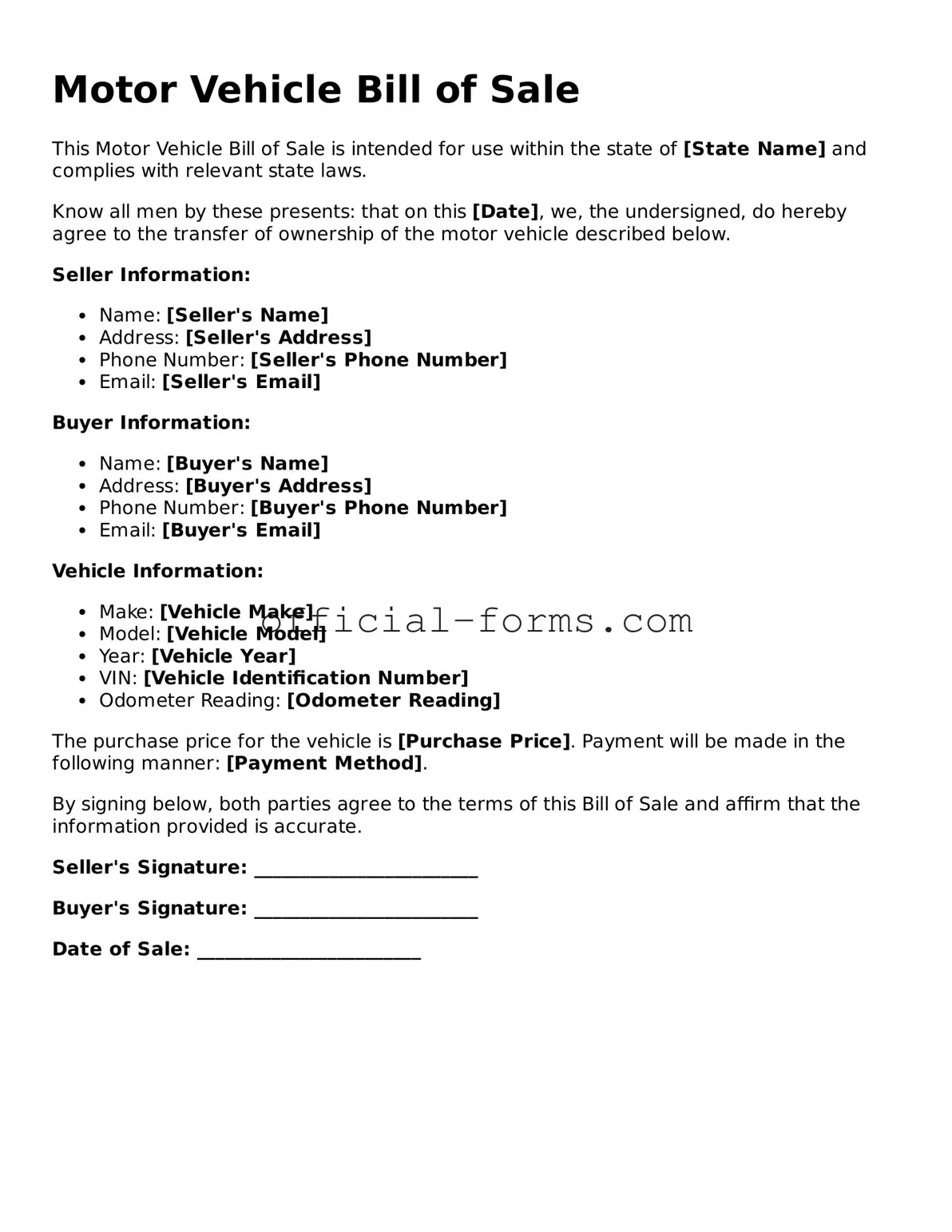Completing a Motor Vehicle Bill of Sale form is a crucial step in transferring ownership of a vehicle. However, many individuals make common mistakes that can lead to complications down the line. One frequent error is failing to provide accurate vehicle identification information. This includes the Vehicle Identification Number (VIN), make, model, and year. Omitting or miswriting this information can create confusion and may complicate future registration.
Another common mistake is not including the correct sale price. The sale price should reflect the actual amount paid for the vehicle. If the price is inaccurately stated, it can lead to issues with taxes or legal disputes. Additionally, some individuals neglect to include the date of sale, which is essential for establishing the timeline of ownership transfer.
People often forget to include both the seller's and buyer's signatures. Without these signatures, the document may not be considered valid. Both parties must sign the form to confirm their agreement to the sale. Moreover, failing to provide their printed names and addresses can lead to difficulties in future communications or legal matters.
Another mistake involves not having a witness or notarization when required. Depending on the state, having a witness or notarizing the document can add an extra layer of legitimacy. Skipping this step may render the document less reliable if disputes arise later.
Some individuals may also overlook the importance of checking for any liens on the vehicle. If a lien exists, it should be disclosed in the Bill of Sale. Not doing so can lead to financial repercussions for the buyer, who may inadvertently purchase a vehicle that is not fully owned by the seller.
Providing incorrect information about the vehicle's condition is another frequent mistake. Buyers deserve to know whether the vehicle has been in accidents or has any mechanical issues. Misrepresentation can lead to legal consequences and damage trust between the parties.
People sometimes fail to make copies of the completed Bill of Sale. Retaining a copy for personal records is essential for both the buyer and seller. This document serves as proof of the transaction and can be useful for future reference.
Finally, neglecting to check state-specific requirements can result in issues. Each state may have different regulations regarding the Bill of Sale. It is important to ensure compliance with local laws to avoid complications during the registration process.
